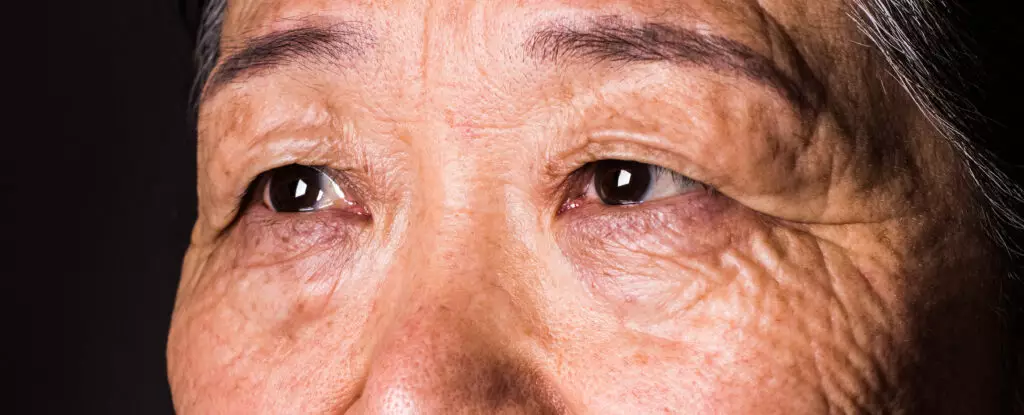Our eyes do more than help us see the world; they are a window into the mind—an early warning system for looming cognitive decline. Emerging research indicates that visual sensitivity can serve as a precursor to dementia, potentially flagging the onset of this debilitating condition years before customary methods of detection. This revelation does not just shift how we understand dementia; it underscores the urgency to focus on our eyes as an integral part of our overall health.
Recently conducted research involving 8,623 individuals from Norfolk, England, demonstrated a compelling correlation between visual sensitivity and dementia. The study participants were monitored for years, revealing that 537 eventually developed dementia. Through a simple test measuring how quickly individuals could detect a triangle in a stream of moving dots, researchers discovered a distinct pattern: those who performed slower were more likely to face cognitive decline. This is a striking insight, suggesting that our eyes could convey information about our brain health that standard cognitive evaluations overlook.
Visual Impairments: A Cognitive Time Capsule
The link between visual processing and cognitive health opens up new frontiers in dementia research. Factors like contrast sensitivity—the ability to distinguish between objects and backgrounds—and color discrimination highlight how Alzheimer’s Disease fundamentally alters our perceptual experience. Interestingly, these visual impairments may develop long before more recognizable symptoms of cognitive decline manifest. For instance, research suggests that early signs of Alzheimer’s may stem from the buildup of amyloid plaques in brain regions responsible for vision, often before affecting memory centers.
Furthermore, the challenge of “inhibitory control” in eye movements, akin to the inability to filter out distractions, signifies another early marker of cognitive degradation. Individuals with Alzheimer’s exhibit difficulty in prioritizing relevant visual stimuli over distractions, which raises significant concerns about real-world implications like driving safety.
As we delve deeper into these symptoms, it becomes evident that cognitive decline reshapes not just memory but the entire framework of perception. This creates a need for urgent investigation into how such visual factors intertwine with cognitive performance and life quality.
Understanding Faces Through Eye Movements
The nuances of eye movement serve as an additional layer of complexity in understanding dementia. Interestingly, research indicates that individuals with dementia fail to adhere to the conventional eye-scan pattern when recognizing faces—a skill essential for interpersonal connections. Whereas healthy individuals typically scan from eyes to nose to mouth, those with cognitive decline might bypass this crucial step, reducing their capacity to imprint newly encountered faces into memory.
Such disorientation can conjure feelings of alienation and confusion, fueling the sense of being lost among strangers. This phenomenon underscores the vital connection between eye movements and cognitive engagement in social encounters—the impairment of which can lead to social withdrawal, affecting overall mental health.
Moreover, the intersection of deliberate eye movements with cognitive enhancement presents an intriguing avenue of research. Early studies propose that certain eye exercises might have the potential to improve memory recall, specifically autobiographical memory. While findings are mixed, the prospective benefits of engaging our ocular faculties in a structured manner cannot be understated.
From Research to Reality: Eye Movements as Diagnostic Tools
Despite promising revelations concerning the use of eye movements as diagnostic instruments for dementia, practical applications remain lagging. Eye-tracking technology, while innovative, presents accessibility challenges—both in cost and required expertise for utilization and analysis. The potential to identify cognitive decline through a simple, non-invasive visual test stands at the frontier of medical innovation; yet, the barriers to entry remain high.
While some research contemplates the impact of activities like reading and watching TV on mental acuity, suggesting that these habits encourage beneficial eye movement and potentially mitigate dementia risks, the question remains: how can we translate these insights into actionable health practices? Such discussions are crucial as we strive to cultivate a proactive approach to cognitive health.
The rich tapestry of connections between our eyes and brains invites us to consider a more comprehensive approach to understanding and preventing cognitive decline. By recognizing visual sensitivity as a potential early warning system, we can harness the insights gained from eye health to foster a society that prioritizes preventive healthcare, especially as we age. Ultimately, the ongoing dialogue between visual and cognitive health holds the promise of not only enhancing lives but also empowering individuals to navigate their golden years with clarity and connection.


Leave a Reply